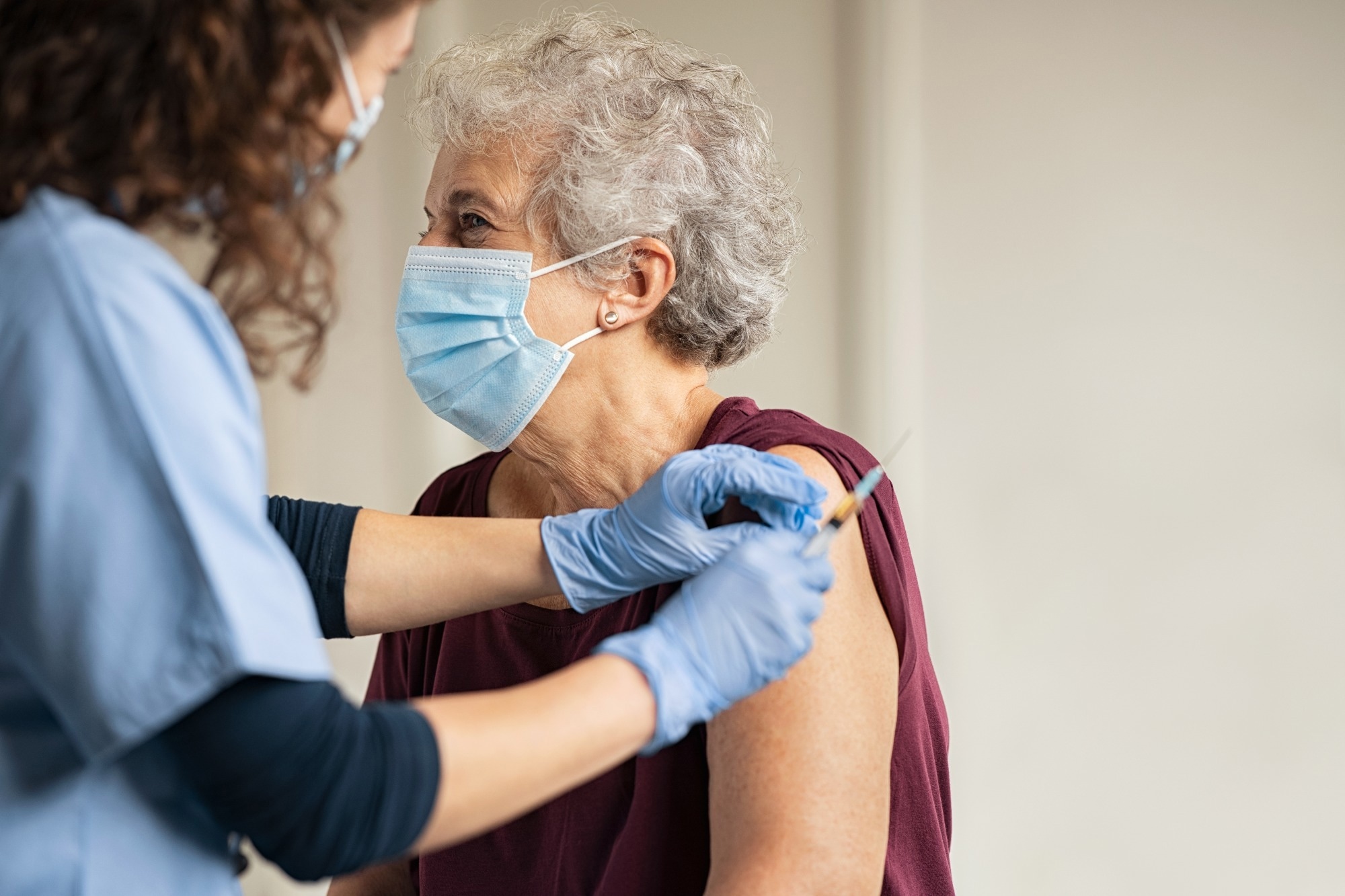where can i buy antabuse in south africa

In a recent Morbidity and Mortality Weekly Report (MMWR), the United States Centers for Disease Control and Prevention (CDC) reported how coronavirus disease 2019 (COVID-19) mortality rates varied among unvaccinated and vaccinated adults aged ≥65 years in the United States between 2022 and 2023.
 Study: Notes from the Field: Comparison of COVID-19 Mortality Rates Among Adults Aged ≥65 Years Who Were Unvaccinated and Those Who Received a Bivalent Booster Dose Within the Preceding 6 Months — 20 U.S. Jurisdictions, September 18, 2022–April 1, 2023. Image Credit: GroundPicture/Shutterstock.com
Study: Notes from the Field: Comparison of COVID-19 Mortality Rates Among Adults Aged ≥65 Years Who Were Unvaccinated and Those Who Received a Bivalent Booster Dose Within the Preceding 6 Months — 20 U.S. Jurisdictions, September 18, 2022–April 1, 2023. Image Credit: GroundPicture/Shutterstock.com
Background
The CDC recommended bivalent COVID-19 vaccines for the first time on September 1, 2022, for the elderly population of the U.S.
Following these vaccine programs, studies analyzed COVID-19 cases and mortality rates by vaccination status soon after authorization of bivalent COVID-19 vaccines, which showed these vaccines conferred additional protection.
About the report
This follow-up CDC report compiled data on the effect and durability of bivalent COVID-19 booster vaccine among adults aged ≥65 years. Specifically, they estimated mortality rate ratios (RRs) in vaccinated people by time since bivalent vaccination during severe acute respiratory syndrome coronavirus 2 (SARS-CoV-2) Omicron variant's predominance periods.
Omicron BA.5 dominated the period between September 18 and November 5, generic substitute for diovan 2022; likewise, Omicron BQ.1/BQ.1.1 and XBB.1.5 dominated between November 6, 2022, and January 21, 2023, and January 22 and April 1, 2023, respectively. The team also estimated RRs for unvaccinated controls.
The CDC retrieved study data, i.e., weekly counts of COVID-19–related deaths among unvaccinated individuals and bivalent booster recipients for September 18, 2022–April 1, 2023, from 20 U.S. jurisdictions. Note that the COVID-19 case surveillance data in the U.S. is linked to immunization registries and registration databases on a routine basis.
The CDC estimated average weekly mortality rates based on the date of sample collection during each period evaluated in this study stratified by vaccination status and time lapsed since receiving the bivalent vaccine's booster dose, i.e., six months.
They categorized rates for unvaccinated individuals by rates among bivalent booster dose recipients after detrending the linear variations in weekly mortality rates. They estimated the remaining 95% confidence intervals (CIs) from the variation in RRs observed. They conducted all analyses per CDC policy and federal law.
Observations
Among those≥65 years who received a bivalent COVID-19 vaccine booster or remained unvaccinated, there were 8,161 COVID-19–related deaths across 20 U.S. jurisdictions between September 18, 2022, and April 1, 2023.
The percentage of COVID-19-related deaths in 80-year-olds was 58% but inconsistent among vaccinated and unvaccinated individuals and across the three Omicron predominance periods.
However, mortality rates among unvaccinated individuals across all three periods were high. On the contrary, mortality rates among adults aged ≥65 peaked during the BQ.1/BQ.1.1 dominance period, i.e., December 2022.
The CDC also reported time-stratified mortality rates among unvaccinated and vaccinated people two weeks to two months after receiving a bivalent booster vaccination.
They found that mortality RRs markedly reduced between the BA.5- and XBB.1.5-predominant period from 16.3 to 8.4, representing a moderate decline in vaccine effectiveness (VE) from 94% to 88%.
On the other hand, mortality RRs were comparable in people who received a bivalent vaccination two weeks to two months earlier or between three and six months before the BQ.1/BQ.1.1- the XBB.1.5-predominant periods, with RRs of 11.4 and 11.0 and 8.4 and 7.3, respectively.
Conclusions
To summarize, a bivalent COVID-19 booster vaccination provided substantial and durable protection against COVID-19–related death in adults aged ≥65 years.
More importantly, there was no corroboration of waning up to six months post-vaccination, similar to other studies evaluating VE against severe disease and death. Thus, CDC strongly recommends that all people aged ≥6 months remain up to date with updated COVID-19 vaccines, including one or more additional bivalent dose(s).
Additional vaccine doses are optional for immunocompromised and people aged ≥65 years.
The SARS-CoV-2 spike protein in the bivalent vaccine is different; thus, CDC reported a slight decrease of 6% in immune evasion during the Omicron XBB.1.5 period compared to the Omicron BA.5 period.
Nonetheless, the study data are clinically relevant, especially regarding COVID-19 vaccine composition. In the U.S., the COVID-19 public health emergency ended on May 11, 2023.
So, they discontinued routine monitoring of COVID-19 incidence, hospitalization, and death rates stratified by vaccine status. Yet, CDC continues to monitor VE through well-controlled studies (e.g., the IVY networks).
Johnson AG, et al. Notes from the Field: Comparison of COVID-19 Mortality Rates Among Adults Aged ≥65 Years Who Were Unvaccinated and Those Who Received a Bivalent Booster Dose Within the Preceding 6 Months — 20 U.S. Jurisdictions, September 18, 2022–April 1, 2023. MMWR Morb Mortal Wkly Rep. doi: 10.15585/mmwr.mm7224a6. https://www.cdc.gov/mmwr/volumes/72/wr/mm7224a6.htm?s_cid=mm7224a6_w
Posted in: Medical Science News | Medical Research News | Disease/Infection News | Healthcare News
Tags: Coronavirus, Coronavirus Disease COVID-19, covid-19, Immunization, Mortality, Omicron, Protein, Public Health, Respiratory, SARS, SARS-CoV-2, Severe Acute Respiratory, Severe Acute Respiratory Syndrome, Spike Protein, Syndrome, Vaccine

Written by
Neha Mathur
Neha is a digital marketing professional based in Gurugram, India. She has a Master’s degree from the University of Rajasthan with a specialization in Biotechnology in 2008. She has experience in pre-clinical research as part of her research project in The Department of Toxicology at the prestigious Central Drug Research Institute (CDRI), Lucknow, India. She also holds a certification in C++ programming.
Source: Read Full Article